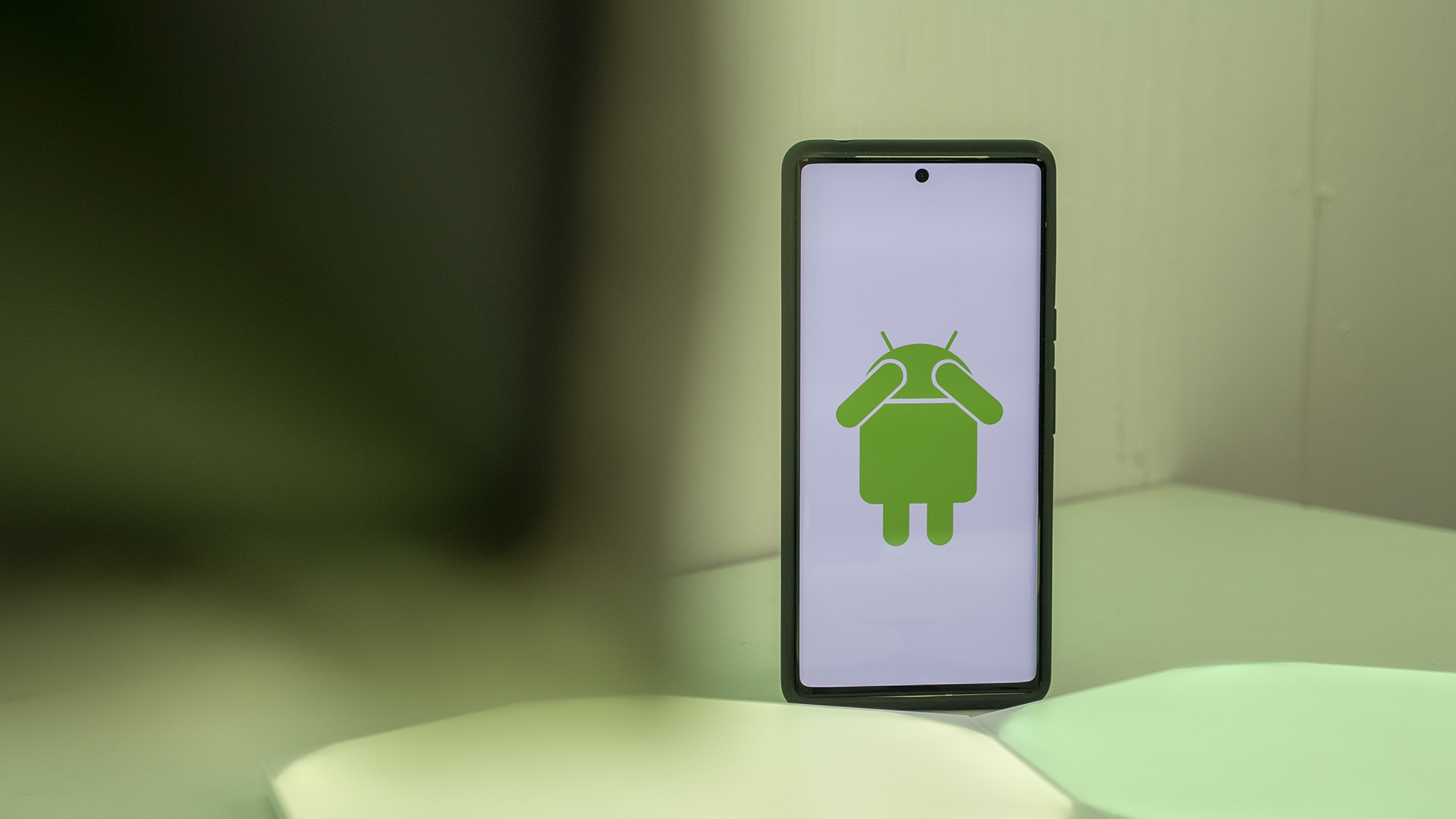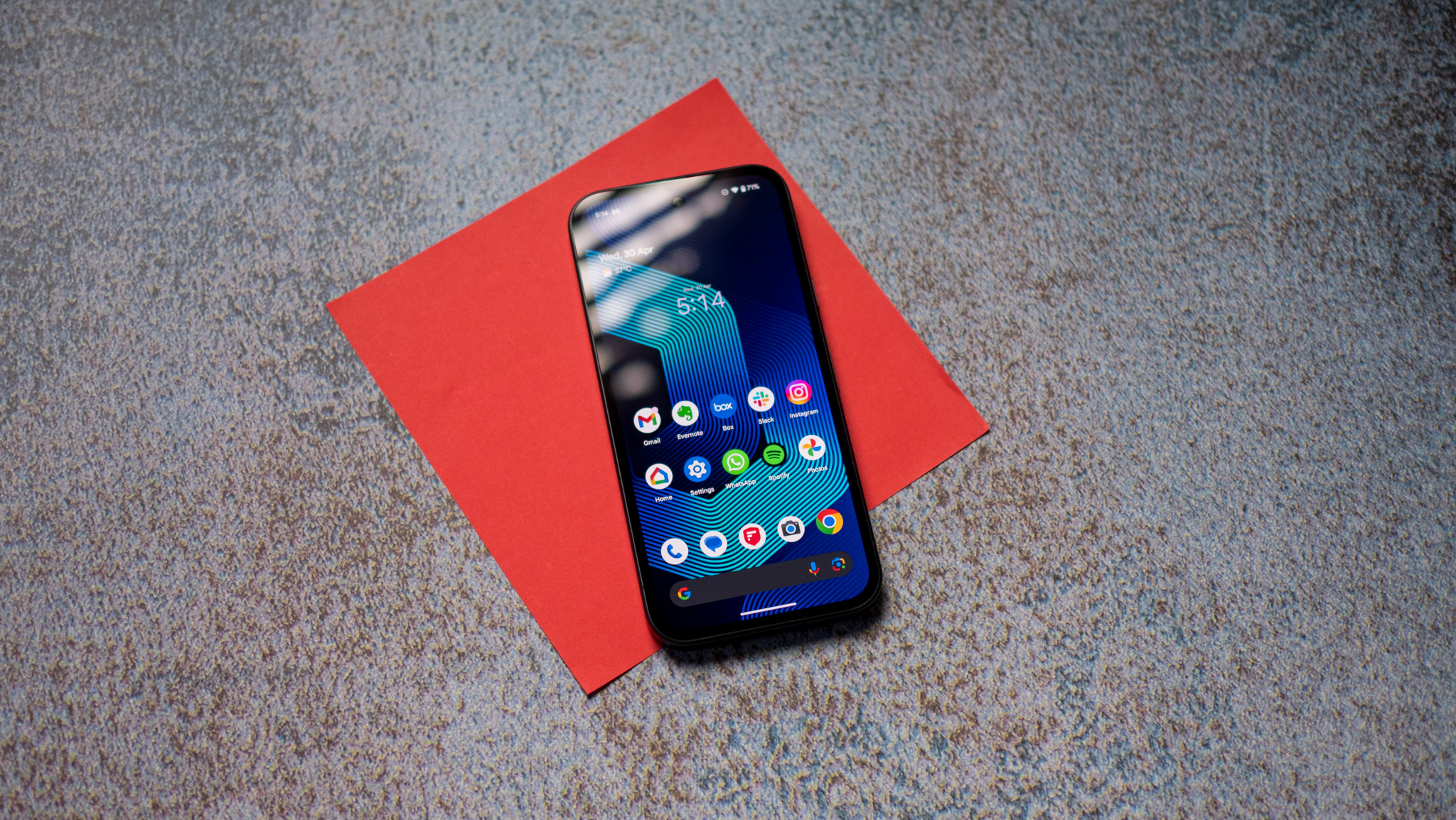This pesky Android storage bug was finally fixed and we almost didn't know
"Ghost storage" that can't be freed up will no longer haunt users.

Have you ever come across a bug that no one else has? How about one that's affected many users for a long time but never seems to have been fixed? When a bug is actually fixed — especially a serious one — you would probably expect some big fanfare in the form of an update changelog and several accompanying articles written by sites like Android Central, right?
But one bug that I wrote about almost a year ago was quietly fixed and almost no one knew about it. That is until one Pixel 5 owner from France reached out to my Android Central email address and told me about it. So how in the world did we miss such a big deal thing? To put it simply, Google’s bug reporting system is often kept private to protect personal information submitted via its users.
In this case, our reader submitted a bug report in August 2021 and received a notification that the bug had been fixed in early February. A recently released Android beta included the fix but, almost assuredly, the engineer responsible probably didn’t realize just how many Android users have been affected over the years. In general, I would say media is quick to report bugs but often doesn’t report on bug fixes, especially if said company isn’t supplying reports of bugs fixed in a palatable way. So how do we fix this? I’ve got a few ideas.
Bugs in the cracks

I vividly remember watching Who Wants To Be A Millionaire back in 8th grade with the ever-wonderful Regis Philbin as the host of the day, excited to see someone actually win a million dollars on the show. The question revolved around the origination of the term “computer bug” as we know it today. As a fledgling programmer at the time, I was enamored with the fact that I had no idea where a word I used daily even came from.
The answer was a moth that got trapped in a computer relay in 1946 and short-circuited the machine. The literal use of the name bug does an excellent job to illustrate just how devious problems in coding can be and, oftentimes, bugs in code can be as difficult to squash as one real-life bug hiding in the cracks of a wall.
As the userbase of an operating system grows, so does the number of reported bugs. Everyone uses their phone (or other devices) differently and, as such, the number of unique bugs has grown over the years. To complicate matters further, the number of bug reports have increased as users have become more tech-savvy and companies develop ways to make it easier for users to report bugs.
As the userbase of an operating system grows, so does the number of reported bugs.
Because of that, bug tracking isn’t as easy as actually reporting the bug. Mishaal Rahman, senior technical editor at Esper and former editor-in-chief of XDA Developers, points out that some phones and beta versions of Android ship with a “feedback app that lets users create reports on the (Google) Issue Tracker.”
Get the latest news from Android Central, your trusted companion in the world of Android
The problem with this tracking method is that it often involves personal information, obfuscating the actual bug report from the eyes of the media and the public. And, as Rahman put it, the Issue Tracker “UI is very outdated and hard to navigate.” Case in point, I spent the better part of an hour trying to find the bug report for the aforementioned storage bug and couldn’t find it for the life of me. It wasn’t until I wrote our wonderful French Pixel 5 user and asked for more information that I actually got to see the bug report.
I couldn't find the bug because it was marked as private and only one user and a Google Engineer were able to view its existence.
The reason I couldn’t find it? Turns out it wasn’t just the archaic interface for Google’s Issue Tracker. It was also the fact that the bug was marked as private and only this person and a Google Engineer were able to view its existence. While the Issue Tracker is the most direct way to submit a bug report to Google, Rahman says Google support forums are “where you're most likely to receive a response from a product expert who can begin the process to flag the issue internally.”
The bright side of that approach, too, is that the initial post is public. Any private data you need to submit to help Google engineers solve the problem is done through another, more private channel. Companies who make the best smartphones — like Samsung, OnePlus, Xiaomi, and OPPO, to name a few — typically run their own support forums, as well.
It’s hard to see through an opaque wall

So we’ve covered how bugs can be reported and some of the best ways to report bugs, but how do we get to a point where it’s easy for any user to learn about existing bugs? Furthermore, how can I, as a journalist, do my job better and inform my readers when prominent bugs are fixed? The answer lies in transparency and communication.
When I asked Google about the issue, a Google spokesperson told me the best way to track these sorts of issues is likely by scouring the official support forums for the product in question. That’s fine, we’ve already covered how that can be helpful, but what if the bug hasn’t been widely publicly reported? Or, worse yet, if the bug report itself is kept private and never published once it has been fixed?
A Google spokesperson told me the best way to track these sorts of issues is likely by scouring the official support forums for the product in question.
Rahman tells me that “Google (and other OEMs) absolutely could do a better job of responding to media posts about their products.” I often receive emails hours — or, sometimes, even minutes after publishing a post — from a company spokesperson. Sometimes the email is asking me to correct something that I might have misunderstood, while other times it might be to provide me with a quote or more information to better inform our readers on the topic.
But, while companies like Google often do a good job of responding to posts, Rahman thinks things should be different (and I’m inclined to agree). “While I don't know how well Google (and other OEMs) keep track of articles mentioning their products, I do think they could do a better job at proactively reaching out to publications to issue statements.”
In other words, it would be pretty nifty to see some of the issues we post about — especially bugs that affect a large number of users or ones that look particularly bad from a PR standpoint — to be better tracked by spokesfolks. When those issues are solved, a follow-up to the original post could be issued.
Obviously, that’s a rather massive undertaking and it would require a team of individuals to manage. But, if it’s the job of PR to drive the narrative for represented products — as issued with the conversation around Pixel 6 bugs, for instance — then it certainly would behoove PR firms to at least try.
User opinions on a brand can be swayed by reports of unresolved software bugs, but they can also be turned around on reports of quickly issued software patches.
Mishaal Rahman
Now, with that said, I don’t want to take the onus off of my own job, either. As Rahman, a former editor-in-chief himself said, “User opinions on a brand can be swayed by reports of unresolved software bugs, but they can also be turned around on reports of quickly issued software patches.” It’s just as important for sites like Android Central to report on the existence of a bug as it is to report when that bug gets fixed.
After all, it’s our responsibility to ensure companies are being held accountable for the promises they make to consumers. Furthermore, as Rahman points out, “Companies aren't held accountable for how long they take to investigate and address bugs that they are informed about.” If we also don’t report on how long it took to fix a particular bug, few people will know and can’t form a proper opinion on how reliable or consistent a brand is.
Fixing the problem

In the end, it all boils down to transparency. While the UI or the way companies like Google organize the massive amounts of information in an official bug tracker could be improved, giving users the ability to better find and understand existing bugs is the real fix.
Bug reports often contain personal information because a bug needs to have exact data associated with it in order to properly solve the problem, but that kind of information can easily be pruned for public viewing. Knowledge is power, but it’s hard to seek that knowledge when the library’s contents are stacked in an unorganized pile and, worse yet, a restricted section keeps that information to only a few sets of privileged eyes. Maybe we can make that better together, eh Google?

